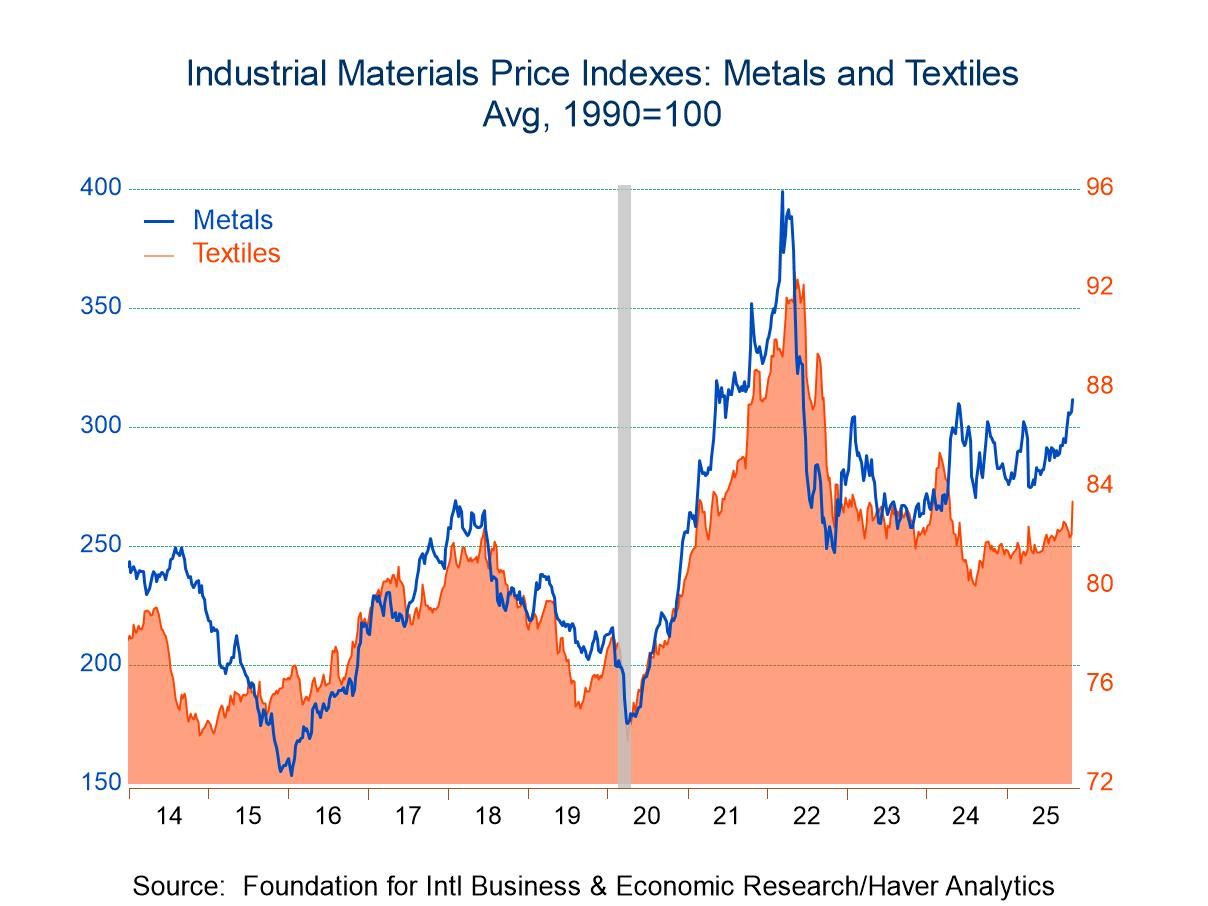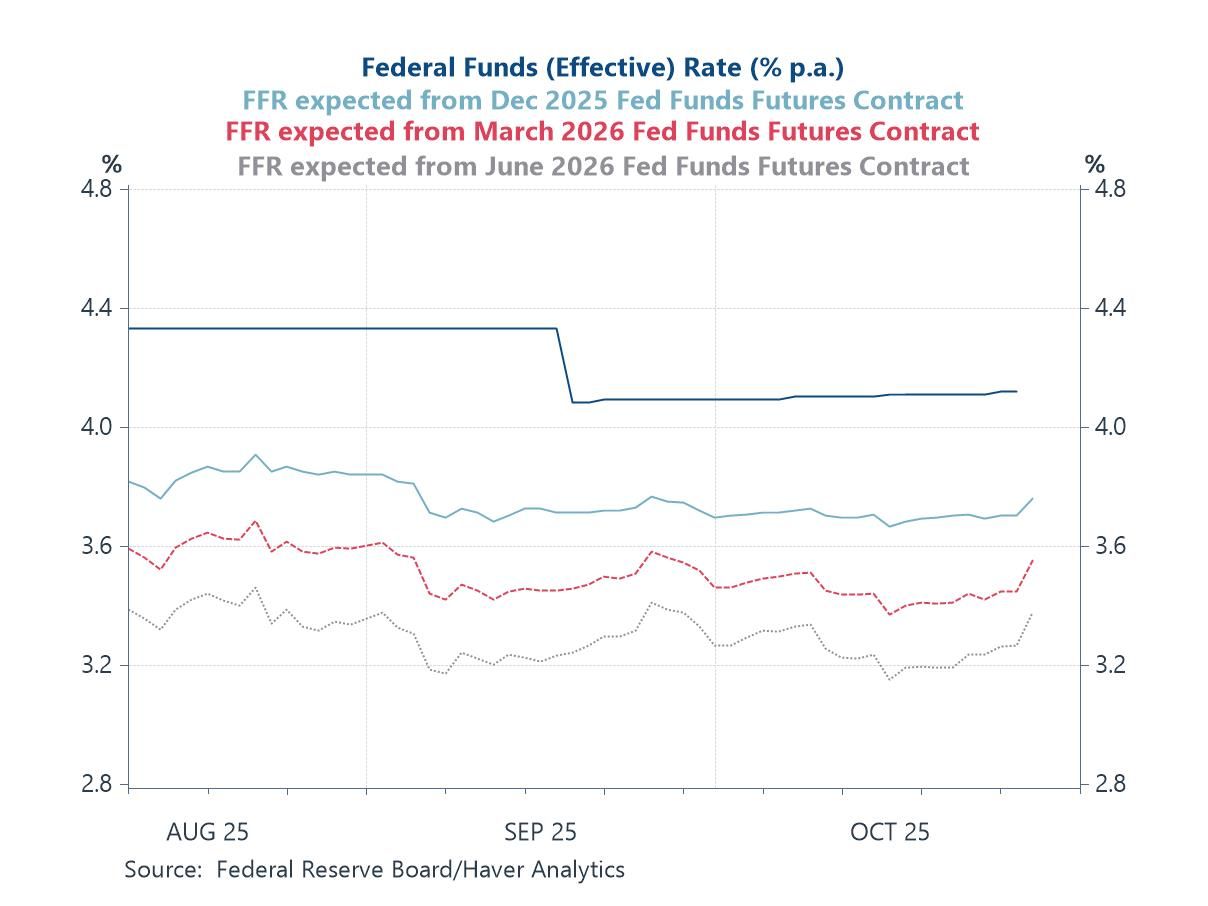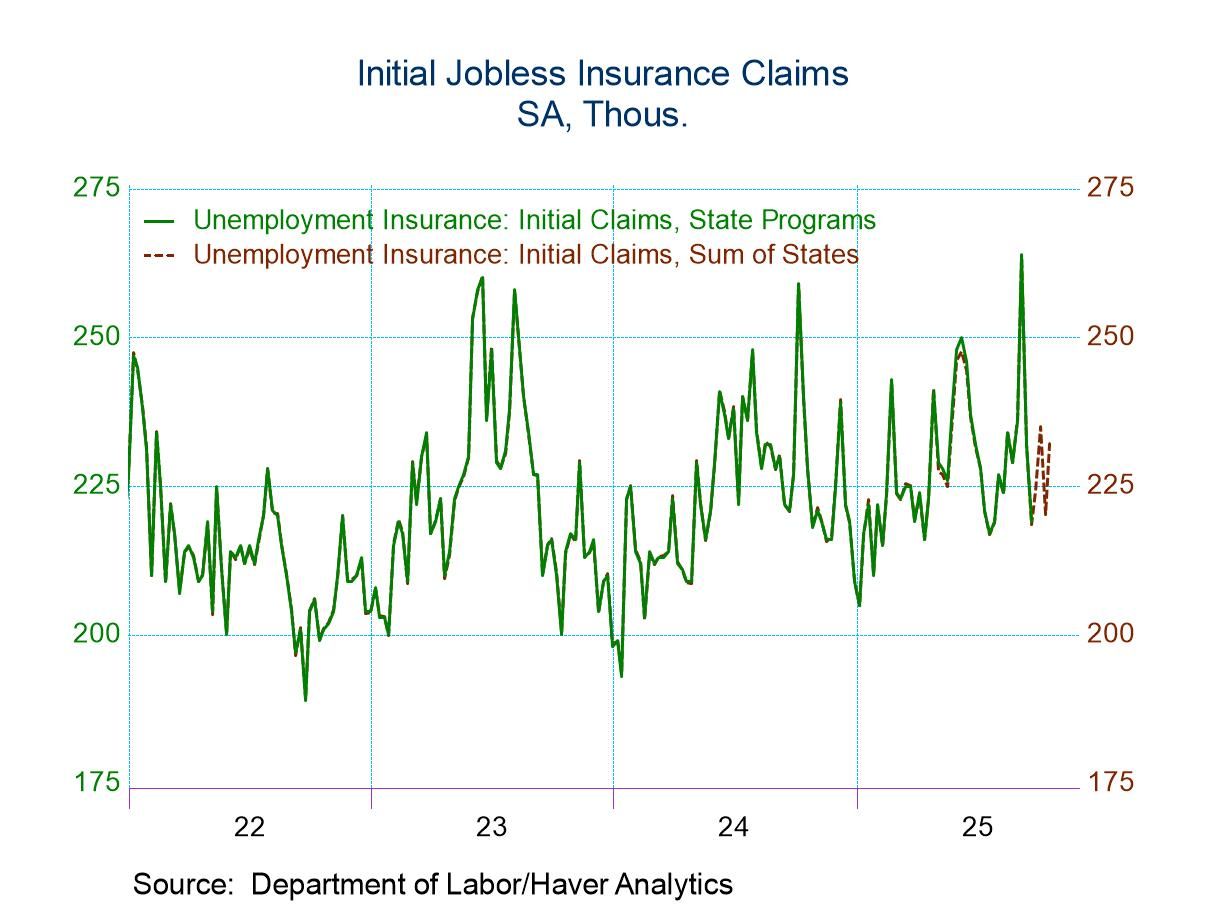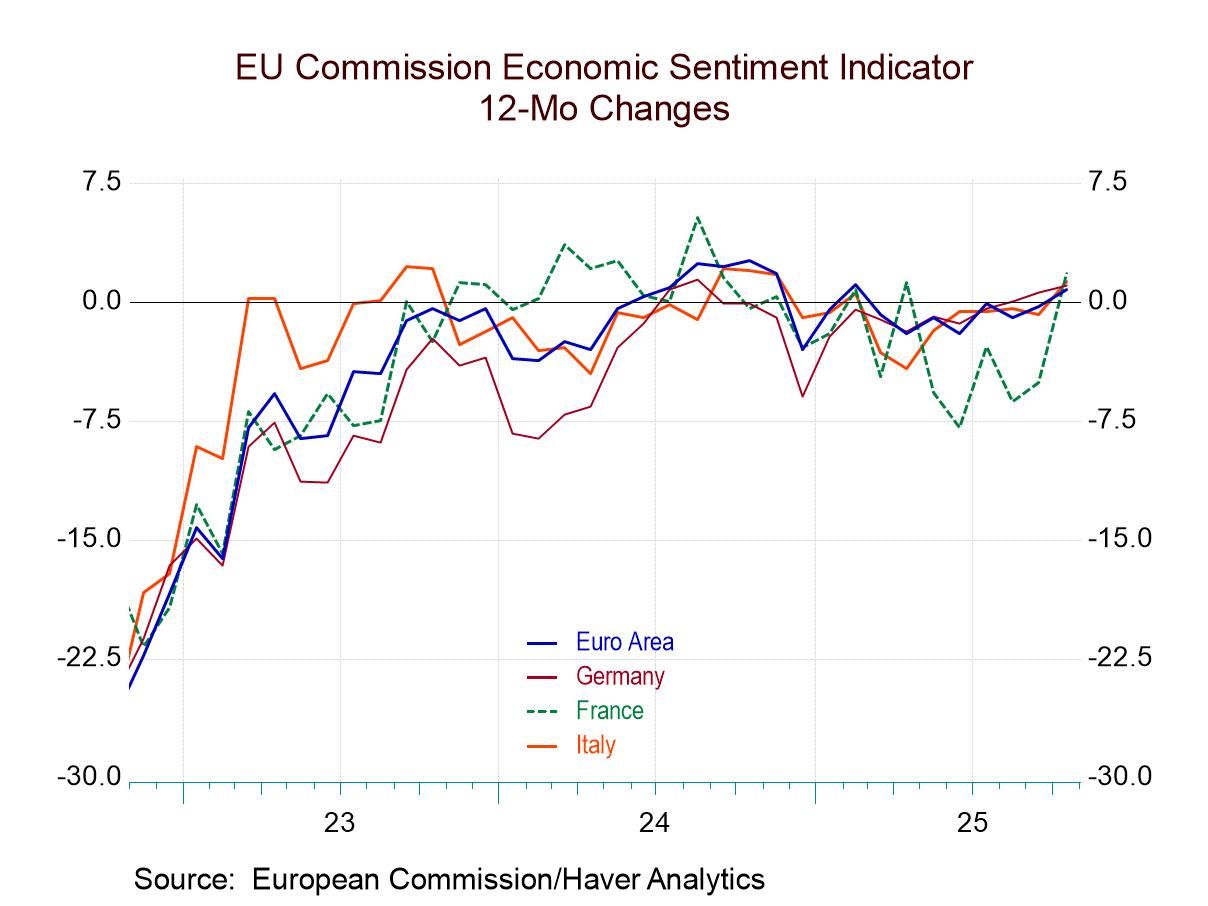 Global| Mar 27 2008
Global| Mar 27 2008U.S. 4Q GDP Growth Unrevised at 0.6%, Profits Fell
by:Tom Moeller
|in:Economy in Brief
Summary
U.S. real GDP growth during 4Q '07 was unrevised, as expected, at 0.6% (AR). Growth during the last two quarters was down sharply from an average gain during the prior two periods of 4.4%. Reported for the first time were corporate [...]

U.S. real GDP growth during 4Q '07 was unrevised, as expected, at 0.6% (AR). Growth during the last two quarters was down sharply from an average gain during the prior two periods of 4.4%.
Reported for the first time were corporate profits and overall earnings fell 3.3% from 3Q (+2.5% y/y). Profits of domestic nonfinancial corporations fell 4.3% (-0.0% y/y) for the second consecutive quarterly decline. The housing sector's meltdown reduced financial sector corporate profits by a much sharper 15.2% (-16.4% y/y) while those declines were offset somewhat by the strength of overseas earnings. They grew 16.4% (42.8% y/y). In the GDP detail, improvement in the foreign trade deficit continued to add sharply to overall growth, as it did in the third quarter. 4Q imports are now shown to have declined at a little revised 1.4% (+1.0% y/y) rate. Export growth, however, was revised up to 6.5% (8.4% y/y).The added addition to GDP growth from foreign trade was offset by a greater 1.8 percentage point subtraction from inventory decumulation.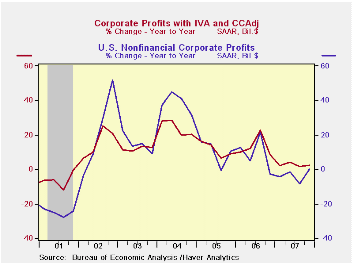
Domestic demand growth was little changed as the gain in final sales to domestic purchasers is still estimated slower at 1.3%. The decline in residential construction was unrevised at a sharp 25.2% (-18.6% y/y) rate of decline. That reduced overall real GDP growth by 1.3 percentage points. Growth in business fixed investment grew a little revised 6.0% (7.1% y/y) as equipment spending slowed to a 3.1% (3.6% y/y) growth rate. Nonresidential construction during 4Q grew an accelerated 12.4% (15.1% y/y). Growth in real personal consumption was raised slightly to 2.3% (2.6% y/y).
Growth in the GDP chain price index was lowered slightly to a 2.4% (AR) gain. The PCE price index rose at a reduced 3.9% rate (3.4% y/y). Less food & energy consumer prices was taken down a notch to a 2.5% (2.1% y/y) growth rate. Prices of business fixed investment rose 1.1% (0.6% y/y) but residential investment prices fell at a 0.4% (+0.1% y/y) rate.
Protecting Homeowners and Sustaining Homeownership is this morning's speech by Fed Governor Randall S. Kroszner and it can be found here.
Monetary Policy Actions and Long-Run Inflation Expectations is from the Federal Reserve Board and it can be found here.
| Chained 2000$, % AR | 4Q '07 (Final) | 4Q '07 (Preliminary) | 4Q '07 (Advance) | 3Q '07 | Y/Y | 2007 | 2006 | 2005 |
|---|---|---|---|---|---|---|---|---|
| GDP | 0.6 | 0.6 | 0.6 | 4.9 | 2.5 | 2.2 | 2.9 | 3.1 |
| Inventory Effect | -1.8 | -1.5 | -1.3 | 0.9 | -0.2 | -0.3 | 0.1 | -0.2 |
| Final Sales | 2.4 | 2.1 | 1.9 | 4.0 | 2.8 | 2.5 | 2.8 | 3.3 |
| Foreign Trade Effect | 1.0 | 0.9 | 0.4 | 1.4 | 0.8 | 0.7 | -0.1 | -0.2 |
| Domestic Final Demand | 1.3 | 1.2 | 1.4 | 2.5 | 1.9 | 1.8 | 2.7 | 3.3 |
| Chained GDP Price Index | 2.4 | 2.7 | 2.6 | 1.0 | 2.6 | 2.7 | 3.2 | 3.2 |
Tom Moeller
AuthorMore in Author Profile »Prior to joining Haver Analytics in 2000, Mr. Moeller worked as the Economist at Chancellor Capital Management from 1985 to 1999. There, he developed comprehensive economic forecasts and interpreted economic data for equity and fixed income portfolio managers. Also at Chancellor, Mr. Moeller worked as an equity analyst and was responsible for researching and rating companies in the economically sensitive automobile and housing industries for investment in Chancellor’s equity portfolio. Prior to joining Chancellor, Mr. Moeller was an Economist at Citibank from 1979 to 1984. He also analyzed pricing behavior in the metals industry for the Council on Wage and Price Stability in Washington, D.C. In 1999, Mr. Moeller received the award for most accurate forecast from the Forecasters' Club of New York. From 1990 to 1992 he was President of the New York Association for Business Economists. Mr. Moeller earned an M.B.A. in Finance from Fordham University, where he graduated in 1987. He holds a Bachelor of Arts in Economics from George Washington University.



